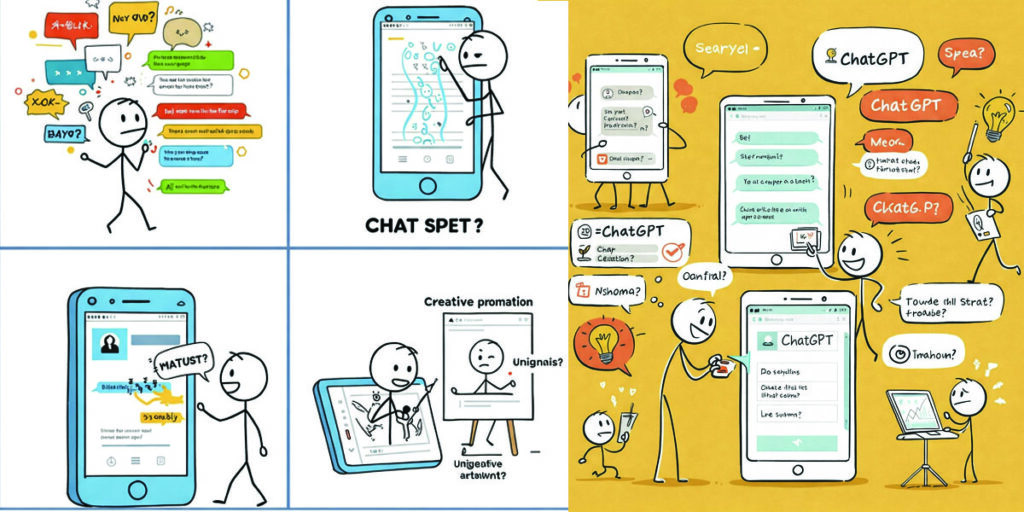AI-powered chatbot builder for customer support and lead generation.
The success of Tars underscores a broader truth in the digital age: that the most impactful technologies are often those that are made accessible and practical for everyday business challenges. By lowering the barrier to entry for building sophisticated chatbots, Tars has empowered businesses to harness the power of conversation to acquire and support their most valuable assets – their customers.
In the rapidly evolving landscape of digital business, effective communication and efficient lead capture are paramount. Companies constantly seek innovative ways to engage potential customers and support existing ones at scale, around the clock. This pressing need has fueled the rise of conversational AI, specifically in the form of chatbots, which offer a dynamic and interactive alternative to traditional web forms, FAQs, and contact centers. Among the key players facilitating this shift is Tars, a platform specializing in building AI-powered chatbots for customer support and lead generation. This article explores the journey of Tars, examining its historical trajectory, its place within the burgeoning economic market for conversational AI, and the crucial role of networking and integrations in its operational success and market positioning.
A Glimpse into the Genesis: The History of Tars
The story of Tars begins in 2015 in Bengaluru, India, founded by Ish Jindal and Vinit Agrawal. Their vision was rooted in the belief that the future of online interaction was conversational. At a time when many businesses relied on static websites and forms for information gathering and customer interaction, Jindal and Agrawal foresaw the potential of automated, human-like conversations to dramatically improve user engagement and conversion rates. They embarked on a mission to democratize the creation of these conversational experiences, aiming to build a platform that would allow businesses, regardless of their technical expertise, to deploy powerful chatbots.
From its inception, Tars focused on a no-code or low-code approach to chatbot building. Recognizing that the complexity of traditional programming was a significant barrier for many marketing and customer service teams, they developed an intuitive drag-and-drop interface. This design philosophy was central to their early development and remains a core tenet of the platform today. The goal was to empower business users to build, deploy, and manage chatbots that could engage visitors in interactive dialogues, replacing passive forms with dynamic conversations.
Initial development centered on creating conversational landing pages. The idea was simple yet revolutionary: instead of directing users to a static page with a form, they would land on a page featuring a chatbot ready to interact, answer questions, and guide them towards a desired action. This proved particularly effective for lead generation, as the conversational format felt less like an interrogation and more like a helpful interaction, increasing completion rates for data capture.
Early milestones for Tars included securing initial funding, such as a $100K seed round in 2018. This early investment provided the necessary resources to refine the platform, expand the team, and reach a wider audience. The company’s focus remained sharp: delivering a user-friendly, powerful chatbot builder tailored for specific business outcomes like capturing leads and automating customer inquiries.
Over the years, Tars expanded its capabilities beyond conversational landing pages. Recognizing the need for omnichannel presence, they developed integrations for deploying chatbots on websites as interactive widgets, within messaging apps like WhatsApp, and across various digital touchpoints. They also enhanced the AI and Natural Language Processing (NLP) capabilities of the platform, allowing chatbots to understand a wider range of user inputs and provide more relevant and contextually appropriate responses. The introduction of AI agents and deeper integrations with large language models like those from OpenAI represent a further evolution, enabling more sophisticated conversational flows and automated tasks.
The history of Tars is one of consistent innovation within its core niche. While the company has remained relatively lean compared to some tech giants, its dedication to the no-code conversational AI space has allowed it to carve out a distinct identity. It’s important to note that recent news mentions a “TARS AI” related to Web3 and Solana, which appears to be a separate venture, potentially co-founded by one of the Tars chatbot builder founders. The history detailed here pertains specifically to the AI-powered chatbot builder platform used for customer support and lead generation, which has been the company’s primary focus since 2015/2016. This focus on practical business applications distinguishes the Tars chatbot builder in the market.
The journey of Tars reflects the broader technological trend towards making powerful AI tools accessible to a wider audience. By abstracting away the complexities of coding and natural language processing, Tars has enabled marketing teams, sales departments, and customer support centers to leverage the power of conversational AI to achieve tangible business results.
Navigating the Digital Current: Tars in the Economic Market
The economic market for AI-powered chatbots is a segment of the larger artificial intelligence and marketing technology industries. It is characterized by rapid growth, increasing adoption across diverse sectors, and continuous innovation driven by advancements in AI, particularly in natural language understanding and generation. Tars operates squarely within this dynamic market, focusing specifically on the applications of chatbots for enhancing customer support and optimizing lead generation funnels.
The demand for chatbots stems from several key business imperatives. On the customer support front, companies face the challenge of providing instant, 24/7 assistance while managing costs. Chatbots offer a scalable solution, capable of handling a high volume of routine inquiries simultaneously, reducing wait times for customers, and freeing up human agents to focus on complex issues. Studies and industry reports consistently highlight the cost savings associated with chatbot deployment in customer service, often citing significant reductions in operational expenses.
In lead generation, the challenge is to capture visitor attention, qualify prospects efficiently, and gather valuable information without causing friction. Traditional static forms can be off-putting, leading to high abandonment rates. Conversational interfaces, like those built with Tars, transform this process into an engaging dialogue. By making the interaction dynamic and personalized, chatbots can keep visitors engaged, ask qualifying questions naturally, and capture lead information more effectively, leading to higher conversion rates. Use cases range from collecting contact details and understanding needs to scheduling appointments and providing instant information about products or services.
The market for chatbot builders is diverse, ranging from large enterprise platforms offering comprehensive AI suites to niche players focused on specific functionalities or industries. Tars positions itself primarily as a no-code/low-code platform, appealing to businesses that want powerful conversational capabilities without heavy reliance on IT resources. Its target audience includes marketing teams looking to boost conversion rates on landing pages and websites, sales teams aiming to qualify leads faster, and customer support departments seeking to automate responses to frequently asked questions.
Examining Tars’ economic model reveals a Software as a Service (SaaS) approach. They offer tiered pricing plans, often including a free tier with limited features, a premium plan with more capabilities and usage limits (like conversations per month), and custom enterprise plans for larger organizations with more complex needs. This tiered model allows businesses of varying sizes to adopt the platform, scaling their usage as their needs and success with chatbots grow. While specific pricing details can vary and are subject to change, sources indicate plans starting from a certain price point (e.g., $500/month for a premium tier), reflecting the value Tars provides in automating significant business functions. The enterprise tier typically involves custom pricing based on the volume of conversations, features required, and level of support.
The competitive landscape for Tars is crowded, encompassing a wide array of chatbot platforms. Competitors range from broad customer engagement platforms with chatbot features (like HubSpot or Freshworks) to specialized chatbot builders (like ManyChat, Landbot, or Chatfuel), and even large AI players offering conversational AI tools (like IBM Watson or Amazon Lex). Within the “code-free chatbot builders” market, Tars holds a specific market share, estimated by some sources to be around 1.13% as of early 2023. While this percentage might seem small compared to leaders in certain segments (like ManyChat’s dominance in Facebook Messenger bots), it represents a significant presence in a fragmented market and indicates Tars’ focus on its specific niche of web and WhatsApp conversational experiences for lead generation and support.
Tars’ competitive advantage lies in its ease of use, strong focus on conversion optimization through conversational design, and templates tailored for specific lead generation and customer support use cases across various industries (finance, healthcare, government, real estate, etc.). The platform’s emphasis on conversational landing pages and its intuitive builder differentiates it from platforms primarily focused on live chat or complex enterprise-level AI deployments. The ability to quickly build and deploy chatbots without coding is a major draw for its target market.
The economic impact of Tars on its customers is seen in improved operational efficiency, reduced customer support costs, increased lead conversion rates, and better collection of customer data and insights. By automating initial interactions, Tars allows businesses to allocate human resources more strategically, focusing on higher-value activities. The data collected through chatbot conversations provides valuable insights into customer needs, preferences, and pain points, informing product development, marketing strategies, and 1 sales approaches.
www.beejobs.eu.org / www.beejobs.eu.org
In summary, Tars operates within a high-growth, competitive market driven by the increasing need for scalable, efficient, and engaging digital interactions. Its economic model is based on a SaaS offering, providing accessible tools for businesses to leverage conversational AI for critical functions. While facing competition from various players, Tars maintains a distinct position through its no-code focus and specialization in conversion-oriented conversational experiences.
Connecting the Dots: Networking and Integrations
In the interconnected world of digital business tools, a platform’s ability to “network” – both in terms of technical integrations with other software and in terms of building a business ecosystem through partnerships and community – is crucial for its success and scalability. For Tars, networking manifests strongly through its extensive integration capabilities, which allow its chatbots to seamlessly connect with other essential business applications.
Technical integrations are the backbone of a modern SaaS platform, enabling data flow and workflow automation across different tools. Tars understands this well, offering a wide array of integrations that allow businesses to connect their chatbots to the systems they already use for CRM, marketing automation, analytics, customer support, and more.
A key aspect of Tars’ networking is its integration with platforms like Zapier. Zapier acts as a middleware, allowing Tars to connect with thousands of other web applications without requiring custom code for each connection. This significantly expands the functional reach of Tars chatbots. Through Zapier, businesses can automatically send lead data captured by a Tars chatbot to their CRM (like HubSpot or Salesforce), add subscribers to their email marketing lists (like Mailchimp or ActiveCampaign), log conversation data in spreadsheets (like Google Sheets), create tasks in project management tools (like Trello), and much more. This level of interoperability ensures that the data and interactions happening within the chatbot are not isolated but flow into the business’s existing workflows, making the chatbot a seamless part of their overall digital strategy.
Beyond third-party integration platforms like Zapier, Tars also offers direct integrations with popular tools relevant to its target audience. Integrations with CRM systems like HubSpot and Salesforce are vital for sales and marketing teams to manage leads generated by the chatbots. Connections with advertising platforms like Facebook Conversions allow businesses to track the effectiveness of their chatbot campaigns in driving desired actions. Integrations with calendar applications (like Google Calendar) are essential for appointment scheduling use cases, a common application for lead generation and service booking bots.
The ability to integrate with communication channels beyond the website widget is also a form of networking. Tars’ support for platforms like WhatsApp is particularly significant, especially in regions where WhatsApp is a primary mode of business communication. This allows businesses to extend their conversational reach to where their customers are already active, enabling support and lead generation directly within the messaging app.
Furthermore, the integration with AI models, such as those offered by OpenAI (like GPT-4 or GPT-4o), represents a crucial form of technical networking that enhances the intelligence and conversational capabilities of Tars chatbots. By leveraging these advanced language models, Tars allows users to build chatbots that can understand more complex queries, generate more natural-sounding responses, and even perform tasks like summarizing information or drafting content based on conversation context. This integration of external AI power elevates the sophistication of the chatbots that can be built on the Tars platform.
Beyond technical integrations, “networking” for a company like Tars also involves building relationships within the industry. This can include partnerships with digital marketing agencies, web development firms, or other technology providers whose clients could benefit from conversational AI. Participating in industry conferences, webinars, and online communities helps Tars build brand awareness, establish thought leadership, and connect with potential customers and partners. While specific details about Tars’ business partnerships or community-building initiatives are not as readily available as its technical integrations, these activities are generally crucial for a SaaS company’s growth and market penetration. Engaging with users, gathering feedback, and fostering a community around the platform can also contribute to product improvement and customer loyalty.
In essence, Tars’ approach to networking, particularly through its robust integration capabilities, is a key enabler of its value proposition. By allowing businesses to connect their Tars chatbots with their existing technology stack, Tars ensures that conversational interactions translate into actionable data and streamlined workflows. This interconnectedness is not just a technical feature; it’s a strategic element that positions Tars as a flexible and powerful tool within the broader ecosystem of digital business solutions, facilitating more effective customer support and lead generation processes.
Conclusion: Tars’ Impact and Future
Tars has established itself as a significant player in the accessible AI-powered chatbot market, particularly for businesses focused on enhancing customer support and optimizing lead generation. From its founding in 2015, the company has remained committed to its no-code philosophy, empowering marketing, sales, and support teams to build and deploy conversational interfaces without requiring deep technical expertise.
Historically, Tars’ evolution from conversational landing pages to a multi-channel chatbot builder with increasingly sophisticated AI integrations reflects the dynamic nature of the conversational AI market and the growing demand for more intelligent and versatile chatbots. While navigating a competitive landscape, Tars has carved out a niche by prioritizing ease of use and focusing on tangible business outcomes like conversion rates and support efficiency.
Economically, Tars operates within a high-growth market, capitalizing on the proven benefits of chatbots in reducing costs, increasing efficiency, and improving customer engagement. Its SaaS business model with tiered pricing makes the platform accessible to a range of businesses, from small teams to large enterprises. Tars’ position, while not dominating the entire chatbot market, is notable within the no-code segment, competing effectively by offering a user-friendly platform tailored for specific business needs.
Networking, primarily driven by its extensive technical integrations, is fundamental to Tars’ utility and value proposition. The ability to seamlessly connect with CRMs, marketing automation tools, analytics platforms, and communication channels ensures that Tars chatbots are not isolated tools but integrated components of a business’s digital ecosystem. Leveraging third-party integration services like Zapier further expands its reach and compatibility.
Looking ahead, the future of Tars, and the conversational AI market it inhabits, appears promising. As AI technology, particularly in natural language understanding, continues to advance, the capabilities of platforms like Tars will only grow. The increasing adoption of conversational interfaces by consumers also points to a sustained demand for businesses to engage in this manner. Tars is well-positioned to benefit from these trends, provided it continues to innovate, expand its integration network, and maintain its focus on delivering user-friendly, results-oriented conversational AI solutions for its target market.




















